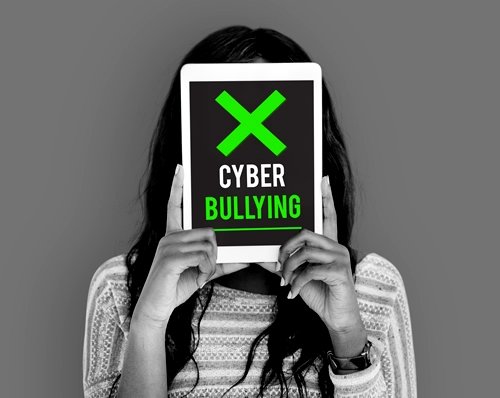Cyberbullying Laws in Scotland: Legal Protection for Victims
This comprehensive guide explores Cyberbullying Laws in Scotland, detailing the legal protections available, relevant legislation, and practical steps.

In today’s digital age, cyberbullying has emerged as a significant societal issue, affecting individuals of all ages, particularly young people. Scotland, known for its progressive legal framework, has implemented robust measures to combat online harassment and protect victims. This comprehensive guide explores Cyberbullying Laws in Scotland, detailing the legal protections available, relevant legislation, and practical steps victims can take to seek justice. By understanding Cyberbullying Laws in Scotland, individuals can better navigate the complexities of online abuse and hold perpetrators accountable.
What is Cyberbullying?
Cyberbullying refers to the use of digital platforms—such as social media, email, text messages, or online forums—to harass, intimidate, or demean another person. Unlike traditional bullying, cyberbullying can occur 24/7, often anonymously, and reach a wide audience instantly. Common forms include:
- Harassment: Sending repeated offensive or threatening messages.
- Doxing: Sharing someone’s personal information without consent.
- Trolling: Posting provocative or abusive content to elicit a reaction.
- Cyberstalking: Persistent online monitoring or contacting that causes fear.
- Denigration: Spreading false or damaging information to harm someone’s reputation.
The psychological impact of cyberbullying can be severe, leading to anxiety, depression, low self-esteem, and, in extreme cases, suicidal ideation. In Scotland, Cyberbullying Laws in Scotland aim to address these harms by providing legal recourse for victims and deterring perpetrators.
The Legal Landscape: Cyberbullying Laws in Scotland
Scotland does not have a single, specific law labeled “cyberbullying.” Instead, Cyberbullying Laws in Scotland encompass a range of existing statutes that address online abuse under broader categories like harassment, defamation, and malicious communications. These laws apply equally to offline and online behavior, reflecting the principle that what is illegal offline is also illegal online. Below, we explore the key legislation underpinning Cyberbullying Laws in Scotland.
1. Communications Act 2003
The Communications Act 2003 is a cornerstone of Cyberbullying Laws in Scotland. Section 127 makes it an offense to send messages through a public electronic communications network that are:
- Grossly offensive or of an indecent, obscene, or menacing character.
- Intended to cause annoyance, inconvenience, or needless anxiety.
For example, sending threatening texts or posting abusive comments on social media platforms like X or Instagram could violate this act. Convictions can result in fines or up to seven years’ imprisonment, depending on the severity. This act is frequently used in Cyberbullying Laws in Scotland to prosecute cases involving malicious online communications.
2. Protection from Harassment Act 1997
The Protection from Harassment Act 1997 provides both civil and criminal remedies under Cyberbullying Laws in Scotland. In Scotland, this act criminalizes a course of conduct that causes alarm or distress, including online harassment. Victims can:
- Pursue criminal charges if the behavior meets the threshold of harassment.
- Seek civil remedies, such as restraining orders or non-harassment orders, to prevent further abuse.
For instance, repeated abusive emails or social media posts targeting an individual could trigger this act. Violating a non-harassment order can lead to imprisonment, making this a powerful tool within Cyberbullying Laws in Scotland.
3. Criminal Justice and Licensing (Scotland) Act 2010
Section 38 of the Criminal Justice and Licensing (Scotland) Act 2010 addresses threatening or abusive behavior, which is often relevant to Cyberbullying Laws in Scotland. This offense occurs when someone behaves in a way that is likely to cause fear or alarm, including through online platforms. Examples include:
- Posting threatening content on social media.
- Sending intimidating private messages.
Convictions can lead to fines or up to seven years in prison, depending on whether the case is heard in a sheriff court or the High Court. This statute strengthens Cyberbullying Laws in Scotland by targeting behaviors that create fear, even if they don’t meet the threshold for harassment.
4. Defamation Act 1996
Defamation, including online libel, is another aspect of Cyberbullying Laws in Scotland. Spreading false statements that harm someone’s reputation—such as malicious rumors on social media—can lead to civil claims for defamation. Victims may seek:
- Financial compensation for reputational damage.
- Court orders for public retractions or apologies.
While defamation cases are civil rather than criminal, they provide an important avenue for victims to address reputational harm under Cyberbullying Laws in Scotland.
5. Public Order Act 1986
The Public Order Act 1986 criminalizes hate speech, including online content that incites hatred based on protected characteristics like race, religion, or sexual orientation. In Cyberbullying Laws in Scotland, this act applies to cases where cyberbullying involves discriminatory or hateful content. Offenders may face fines or imprisonment, reinforcing Scotland’s commitment to tackling online abuse.
6. Abusive Behaviour and Sexual Harm (Scotland) Act 2016
This act introduced specific provisions for Cyberbullying Laws in Scotland related to “revenge porn”—the non-consensual sharing of intimate images. Section 2 criminalizes disclosing or threatening to disclose intimate photographs or films, with penalties of up to seven years’ imprisonment. This legislation addresses a particularly harmful form of cyberbullying, protecting victims from sexual humiliation online.
Challenges in Enforcing Cyberbullying Laws in Scotland
While Cyberbullying Laws in Scotland provide robust protections, enforcing them presents challenges:
- Anonymity: Perpetrators often hide behind anonymous accounts, complicating identification. Police may need to work with social media platforms to trace IP addresses, which can be time-consuming.
- Jurisdictional Issues: If the perpetrator is located outside Scotland, legal action becomes complex due to differing international laws.
- Evidence Collection: Victims must preserve evidence, such as screenshots or message logs, to support their case. Without this, prosecution under Cyberbullying Laws in Scotland may be difficult.
- Financial Costs: Pursuing civil remedies, like defamation claims or non-harassment orders, can be expensive, deterring some victims.
- Lack of Specific Definition: Unlike some jurisdictions, Scotland lacks a legal definition of “cyberbullying,” leading to reliance on broader laws. This can create ambiguity in less severe cases.
Despite these challenges, Cyberbullying Laws in Scotland are evolving to address the realities of the digital world, with ongoing calls for clearer legislation and enhanced enforcement mechanisms.
Practical Steps for Victims Under Cyberbullying Laws in Scotland
If you’re a victim of cyberbullying in Scotland, Cyberbullying Laws in Scotland offer several avenues for recourse. Here’s a step-by-step guide:
1. Document the Abuse
Preserve all evidence of cyberbullying, including:
- Screenshots of offensive posts or messages.
- URLs of abusive content.
- Timestamps and sender details.
This evidence is critical for legal action under Cyberbullying Laws in Scotland, whether pursuing criminal charges or civil remedies.
2. Report to the Platform
Most social media platforms, like X, Facebook, and Instagram, have reporting mechanisms for abusive content. Reporting the abuse may lead to the removal of content or the suspension of the perpetrator’s account. While this doesn’t replace legal action, it’s a quick first step under Cyberbullying Laws in Scotland.
3. Contact the Police
If the cyberbullying involves threats, harassment, or hate speech, report it to Police Scotland by calling 101 (or 999 in emergencies). Provide all documented evidence to support your case. The police can investigate under statutes like the Communications Act 2003 or the Protection from Harassment Act 1997, as part of Cyberbullying Laws in Scotland.
4. Seek Legal Advice
Consult a solicitor specializing in cyberbullying or harassment cases. They can advise on:
- Criminal charges for severe offenses.
- Civil remedies, such as non-harassment orders or defamation claims.
- Costs and likelihood of success.
Legal aid may be available for those unable to afford private representation, ensuring access to justice under Cyberbullying Laws in Scotland.
5. Report to Other Authorities
For specific types of cyberbullying, other organizations can assist:
- Report Harmful Content: An online service that helps remove harmful content.
- Scottish Human Rights Commission: For cases involving human rights violations.
- School Authorities: If the victim is a student, schools have a duty to address bullying, including cyberbullying, under Cyberbullying Laws in Scotland.
6. Seek Support
Cyberbullying can take a toll on mental health. Victims should seek support from:
- Counselors or therapists for emotional guidance.
- Support organizations, like RespectMe (Scotland’s anti-bullying service) or Childline (0800 1111).
- Trusted friends or family for emotional support.
These steps empower victims to leverage Cyberbullying Laws in Scotland effectively while addressing the emotional impact of abuse.
Cyberbullying Laws in Scotland: Protections for Young People
Young people are particularly vulnerable to cyberbullying, with studies showing that over half of UK adolescents aged 12–15 have experienced online abuse. Cyberbullying Laws in Scotland include specific measures to protect minors:
- School Policies: Scottish schools are required to have anti-bullying policies, including provisions for cyberbullying. Schools can discipline students for online behavior that affects the school environment.
- David’s Law Inspiration: While Scotland doesn’t have a direct equivalent to Texas’s David’s Law (which allows court orders against cyberbullies), Cyberbullying Laws in Scotland provide similar protections through non-harassment orders and criminal sanctions.
- Education and Prevention: The Scottish Government promotes digital literacy and anti-bullying education through initiatives like RespectMe, helping young people navigate online spaces safely.
Parents should monitor their children’s online activity, encourage open communication, and report any cyberbullying to schools or police under Cyberbullying Laws in Scotland.
Recent Developments in Cyberbullying Laws in Scotland
As technology evolves, so do Cyberbullying Laws in Scotland. Recent developments include:
- Increased Police Training: Police Scotland has enhanced training on cybercrime, improving their ability to investigate online abuse under Cyberbullying Laws in Scotland.
- Social Media Collaboration: Platforms like X and Facebook are under pressure to cooperate with law enforcement, facilitating the identification of perpetrators.
- Calls for New Legislation: Advocacy groups and parliamentarians have called for a specific “cyberbullying law” to streamline prosecutions and clarify definitions, potentially reshaping Cyberbullying Laws in Scotland.
- Pandemic Impact: Research indicates a decline in cyberbullying victimization during COVID-19 lockdowns, but bystander behaviors increased, prompting new prevention strategies under Cyberbullying Laws in Scotland.
These developments reflect Scotland’s proactive approach to addressing online abuse, ensuring Cyberbullying Laws in Scotland remain relevant in a rapidly changing digital landscape.
International Context: How Scotland Compares
Globally, approaches to cyberbullying vary, providing context for Cyberbullying Laws in Scotland:
- United States: Some states, like Texas, have specific anti-cyberbullying laws (e.g., David’s Law), but federal laws are limited. Scotland’s broader statutes under Cyberbullying Laws in Scotland offer more flexibility but lack specificity.
- South Africa: The Cybercrimes Act 2020 criminalizes cyberbullying explicitly, unlike Cyberbullying Laws in Scotland, which rely on existing laws.
- Canada: Ontario’s Safe Schools Act includes cyberbullying, allowing schools to discipline students for online behavior, similar to provisions in Cyberbullying Laws in Scotland.
Scotland’s framework is robust but could benefit from a dedicated cyberbullying statute to enhance clarity and deterrence, as seen in some jurisdictions.
Preventing Cyberbullying: Tips for Individuals
While Cyberbullying Laws in Scotland provide legal recourse, prevention is equally important. Here are practical tips:
- Use Strong Privacy Settings: Limit who can view your social media profiles or contact you.
- Avoid Sharing Personal Information: Don’t post addresses, phone numbers, or sensitive details online.
- Think Before Posting: Avoid content that could be misinterpreted or provoke abuse.
- Educate Yourself: Learn about safe online practices through resources like RespectMe or StopBullying.gov.
- Don’t Retaliate: Responding to cyberbullies can escalate the situation. Instead, report and block them.
By adopting these habits, individuals can reduce their risk of becoming victims, complementing the protections offered by Cyberbullying Laws in Scotland.
The Role of Social Media Platforms
Social media platforms play a critical role in addressing cyberbullying. Under Cyberbullying Laws in Scotland, platforms like X, Instagram, and TikTok are expected to:
- Moderate Content: Remove abusive posts or accounts promptly.
- Cooperate with Police: Provide user data (e.g., IP addresses) for investigations.
- Educate Users: Promote anti-bullying campaigns and reporting tools.
However, platforms have faced criticism for inconsistent moderation and slow responses. The UK’s Online Safety Act 2023, which applies to Scotland, imposes stricter duties on platforms to tackle harmful content, reinforcing Cyberbullying Laws in Scotland.
Conclusion: The Future of Cyberbullying Laws in Scotland
Cyberbullying Laws in Scotland provide a strong foundation for protecting victims and prosecuting perpetrators, leveraging statutes like the Communications Act 2003, Protection from Harassment Act 1997, and Criminal Justice and Licensing (Scotland) Act 2010. However, challenges like anonymity, jurisdictional issues, and the lack of a specific cyberbullying definition highlight areas for improvement. Ongoing developments, such as enhanced police training and potential new legislation, signal a commitment to strengthening Cyberbullying Laws in Scotland.
Victims of cyberbullying in Scotland have multiple avenues for recourse, from reporting to platforms and police to seeking civil remedies and support services. By understanding Cyberbullying Laws in Scotland, individuals can take informed steps to protect themselves and hold abusers accountable. As technology continues to evolve, Scotland’s legal framework must adapt to ensure robust protections against online harassment, fostering a safer digital environment for all.











